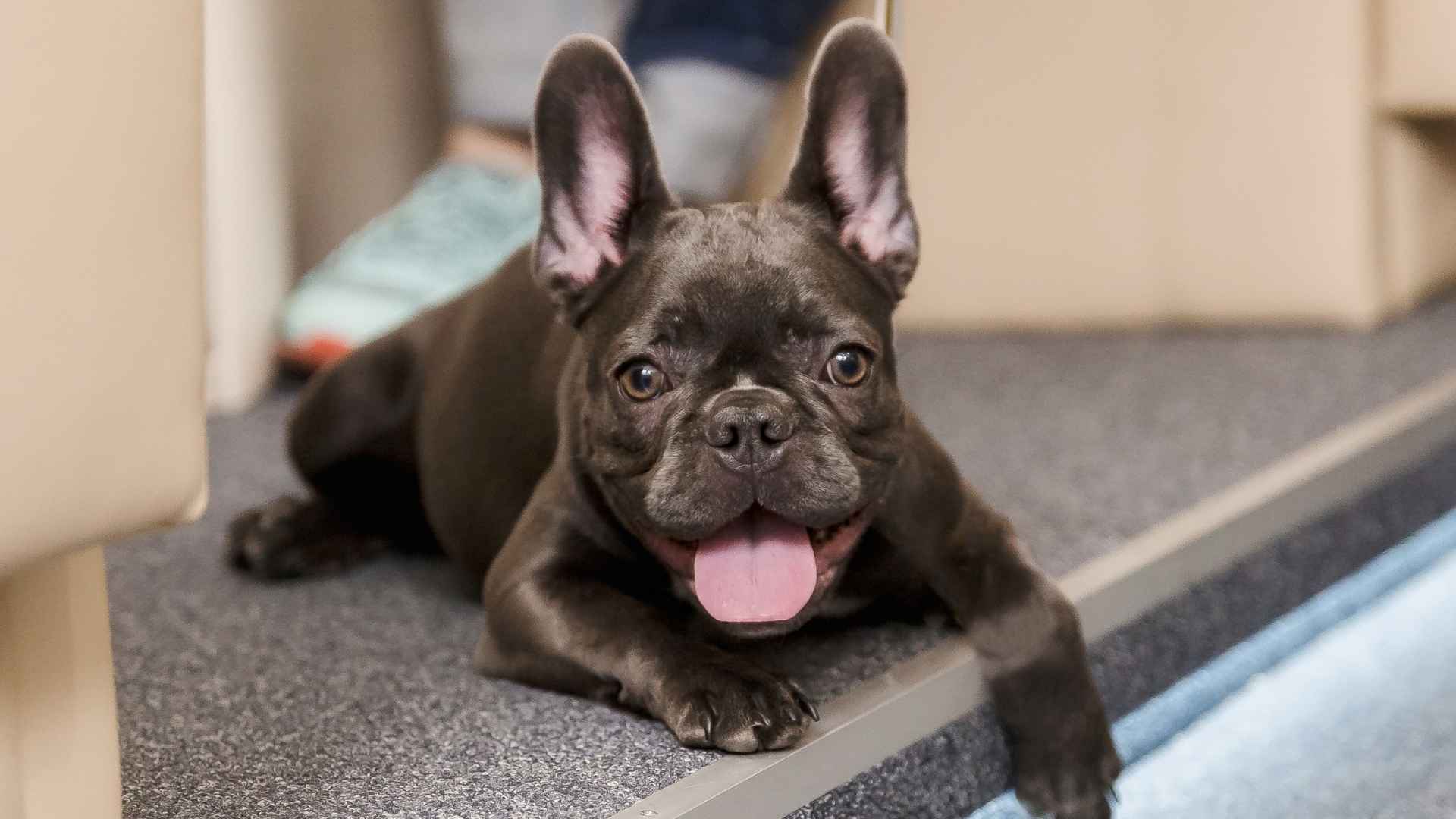Navigating busy trains, bustling buses, or packed subways can be stressful, even more so when you’re traveling with a dog. But some breeds handle public transport like seasoned commuters. Whether it’s their calm nature, compact size, or social nature, certain dogs adapt remarkably well to life on the move, making urban adventures and daily errands more enjoyable for pet owners.
The best dog breeds for public transport are more than just small or cute. They are confident in unfamiliar environments, composed in crowds, and friendly toward strangers and other pets. These traits not only ease the journey but also ensure safety and comfort for both the dog and the surrounding passengers. From navigating subway stairs to sitting quietly during long rides, these breeds embrace the routine with ease.
If you live in a city or love exploring with your canine co-pilot, choosing a breed that thrives in transit is key. Let’s explore the dog breeds that love hopping on public transport just as much as you do.
Dog Breeds That Enjoy Public Transport
1. Pomeranian

The Pomeranian is a spirited little dog with a big personality, making it an ideal companion for life in motion. According to the AKC, the Pomeranian’s beautiful coat, cheerful, foxy expression, and lively personality have contributed to its status as one of the most beloved toy breeds in the world.
Originating from the duchy of Pomerania, this toy breed was originally a 30-pound sheepdog, later bred down to a compact 3–7 pounds and standing just 6–7 inches tall. With its fluffy double coat, alert fox-like face, and charming presence, the Pomeranian thrives in social environments and adapts well to public transport.
This furry friend’s alert nature means it’s always aware of its surroundings, but its affectionate disposition keeps it calm and happy when close to its owner. This breed typically enjoys a long lifespan of 12 to 16 years.
Care Needs
Pomeranians require consistent grooming to maintain their signature fluffy coat. Brushing multiple times per week prevents tangles and keeps shedding in check.
Though small, they are active and need regular mental and physical stimulation. They’re prone to barking, so early training helps manage noise levels in public. Regular vet checkups and dental care are essential to their overall well-being.
Fun Fact: Michelangelo is said to have had a Pomeranian present while painting the ceiling of the Sistine Chapel.
2. Boston Terrier
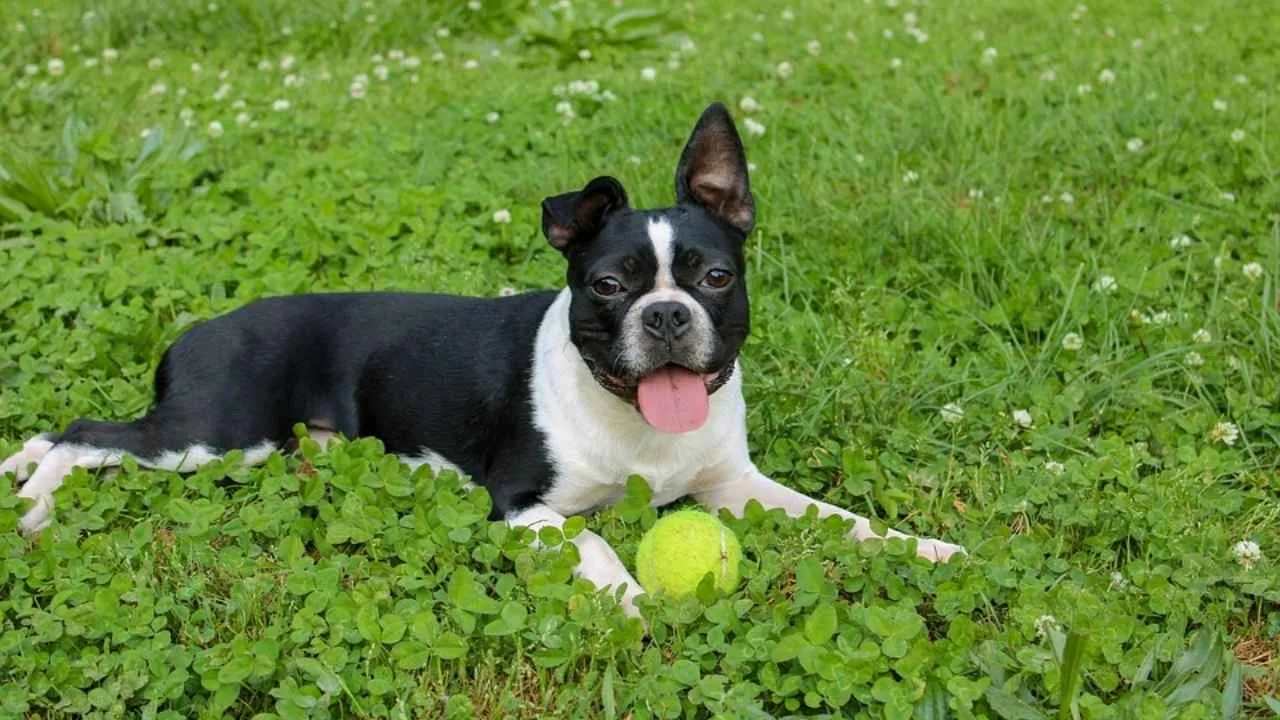
Nicknamed the “American Gentleman” for its formal tuxedo-like coat and well-mannered nature, the Boston Terrier is a charming breed developed in the late 1800s in Boston, Massachusetts. WebMD states that Boston Terriers are a small dog breed with a friendly temperament, making them great family dogs.
A mix between the English Bulldog and the now-extinct white English Terrier, this compact, intelligent breed stands 15–17 inches tall and weighs between 13 to 25 pounds.
With a short, smooth coat that comes in black-and-white or brindle-and-white, large expressive eyes, and naturally erect ears, Boston Terriers are perfectly built for city living.
Their cheerful disposition, manageable size, and people-loving personality make them well-suited for traveling on buses, trains, or subways. They belong to the Non-Sporting Group and typically live 11–13 years.
Care Needs
Boston Terriers require moderate daily exercise and thrive on playtime and brief walks. Due to their brachycephalic (flat-faced) nature, they are sensitive to heat and should be exercised during cooler hours.
Their short coat needs minimal grooming, but regular ear and eye cleaning is essential due to their prominent facial features. They are generally clean, adaptable dogs who are easy to manage in public settings.
Fun Fact: The Boston Terrier is one of the few dog breeds developed entirely in the United States and was the first non-sporting breed bred in America to be recognized by the AKC.
3. Yorkshire Terrier
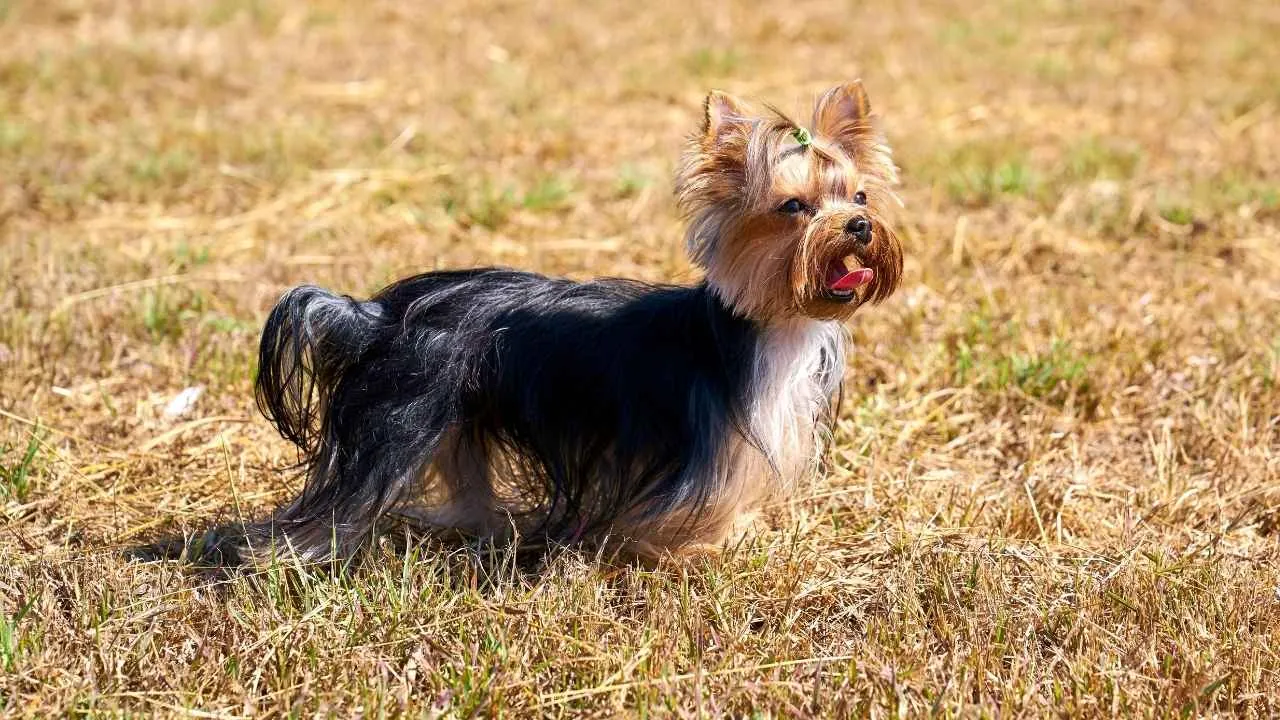
The Yorkshire Terrier, affectionately known as the Yorkie, is a bold little adventurer wrapped in a tiny package. According to PDSA, Yorkshire Terriers may be small in size but have bold, spirited personalities.
Originating in Yorkshire and Lancashire, England, during the mid-1800s, this breed was initially developed from various terriers for ratting in mills. Today, the Yorkie has traded its working roots for toy dog status, standing just 7–8 inches tall and weighing no more than 7 pounds.
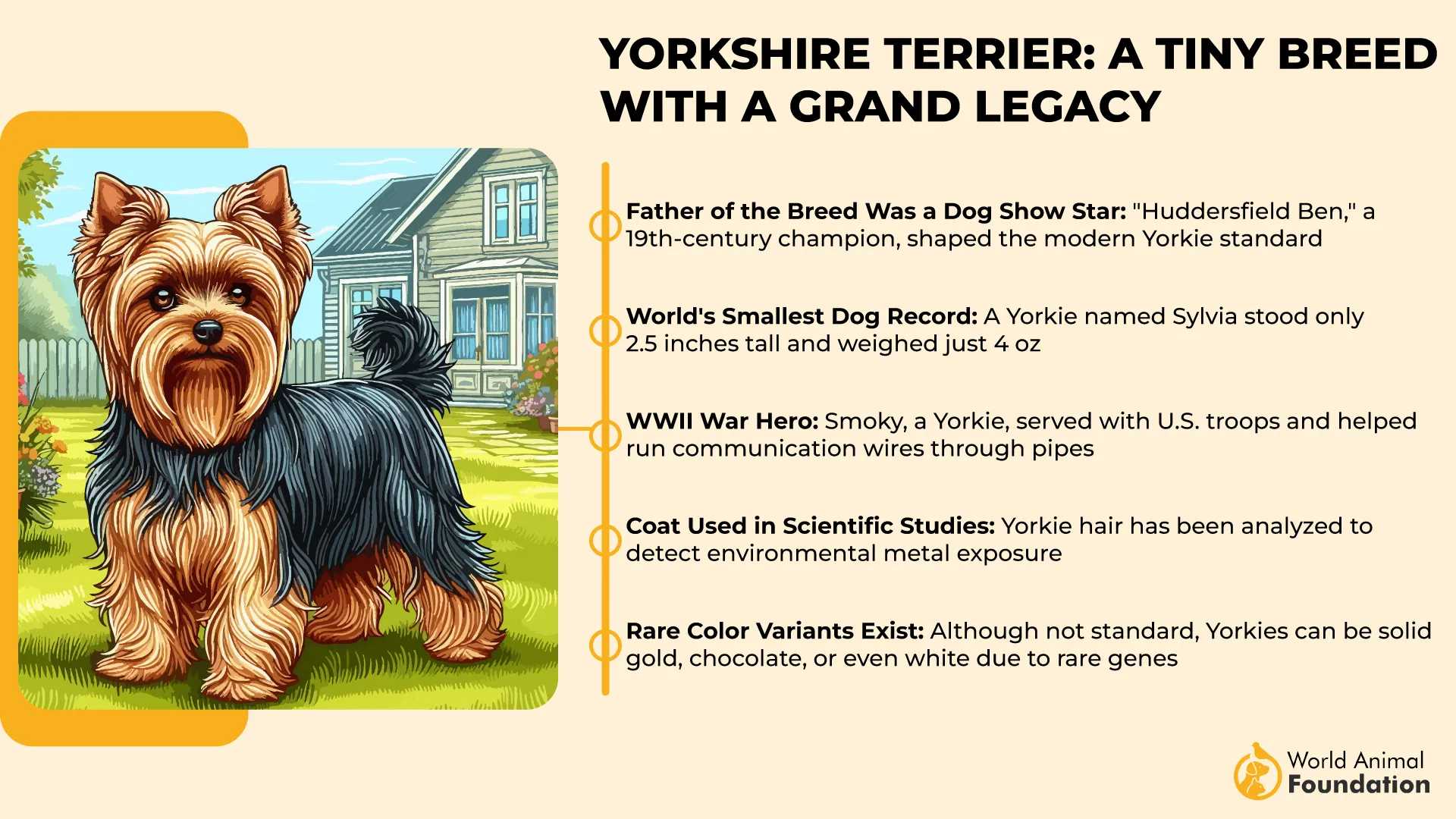
Its most defining feature is the luxuriously silky coat that flows to the ground in show dogs—an attribute that adds to its charm but requires care. Lively, clever, and devoted, the Yorkie belongs to the Toy Group and typically lives 11–15 years.
Care Needs
Yorkies demand regular grooming to keep their long coat tangle-free and beautiful. Daily brushing and frequent trims are essential. Dental care is especially important—this breed is prone to serious tooth problems, so brushing multiple times a week is recommended.
Despite their dainty appearance, Yorkies are energetic and thrive with short walks and indoor play. Their compact size and curious spirit make them ideal for navigating buses or subways with ease.
Fun Fact: A Yorkie named Smoky served bravely in World War II, earning eight battle stars and becoming a symbol of resilience—and possibly the world’s first therapy dog.
4. Miniature Schnauzer
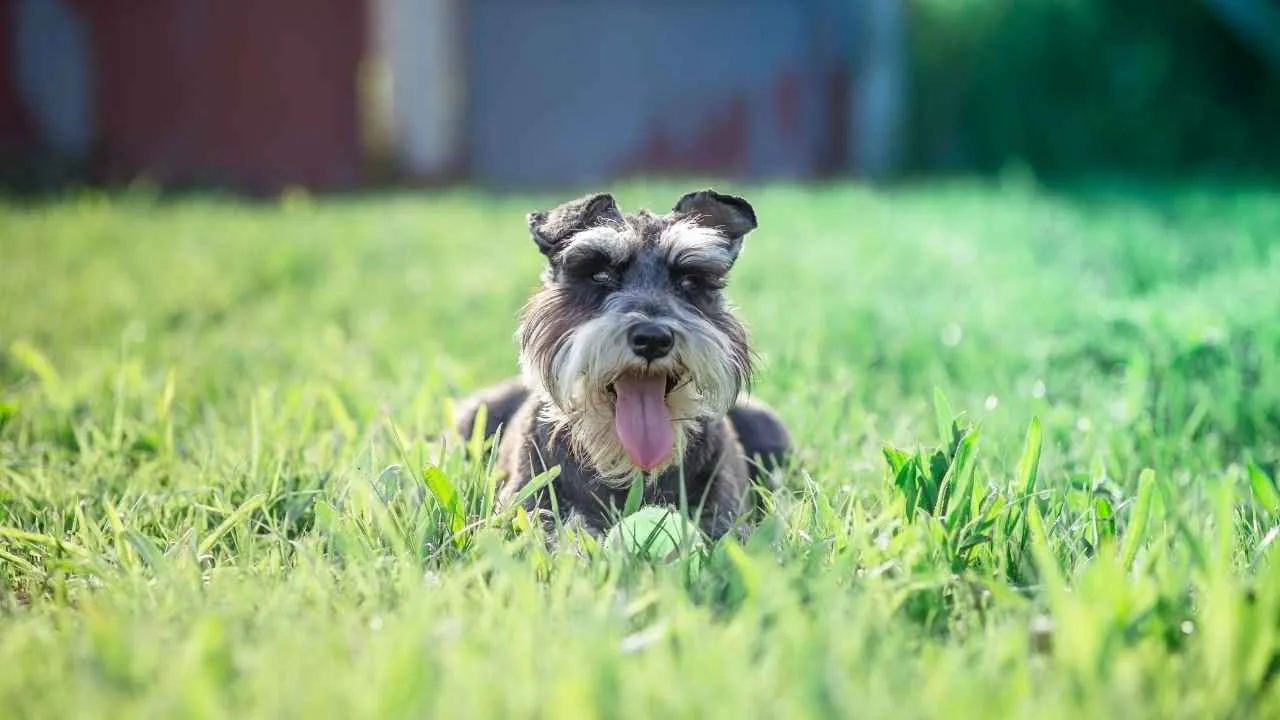
Smart, spirited, and full of charm, the Miniature Schnauzer is a compact dog breed that adapts well to urban life and public transport. Originating in 19th-century Germany as a farm dog bred to eliminate vermin, this terrier quickly gained popularity for its intelligence and loyalty.
The breed typically stands 12–14 inches tall and weighs 13–15 pounds, making it an easy companion for travel.
With a sturdy, square-shaped build, deep-set dark eyes, a wiry double coat, and signature bushy eyebrows and beard, the Miniature Schnauzer is as stylish as it is practical. Belonging to the terrier group, it boasts a life expectancy of around 12–14 years.
Care Needs
Miniature Schnauzers have a double coat that requires regular grooming to maintain their wiry texture and prevent matting. Routine brushing, professional trimming, and coat stripping (if maintaining show standards) are essential.
Their alert nature can lead to barking, so early training and mental stimulation help keep them well-behaved in transit. Regular interaction and structured routines are key to keeping these highly social dogs content while commuting or traveling.
Fun Fact: The name “Schnauzer” comes from the German word for “muzzle,” a nod to the breed’s iconic bearded snout.
5. Chihuahua
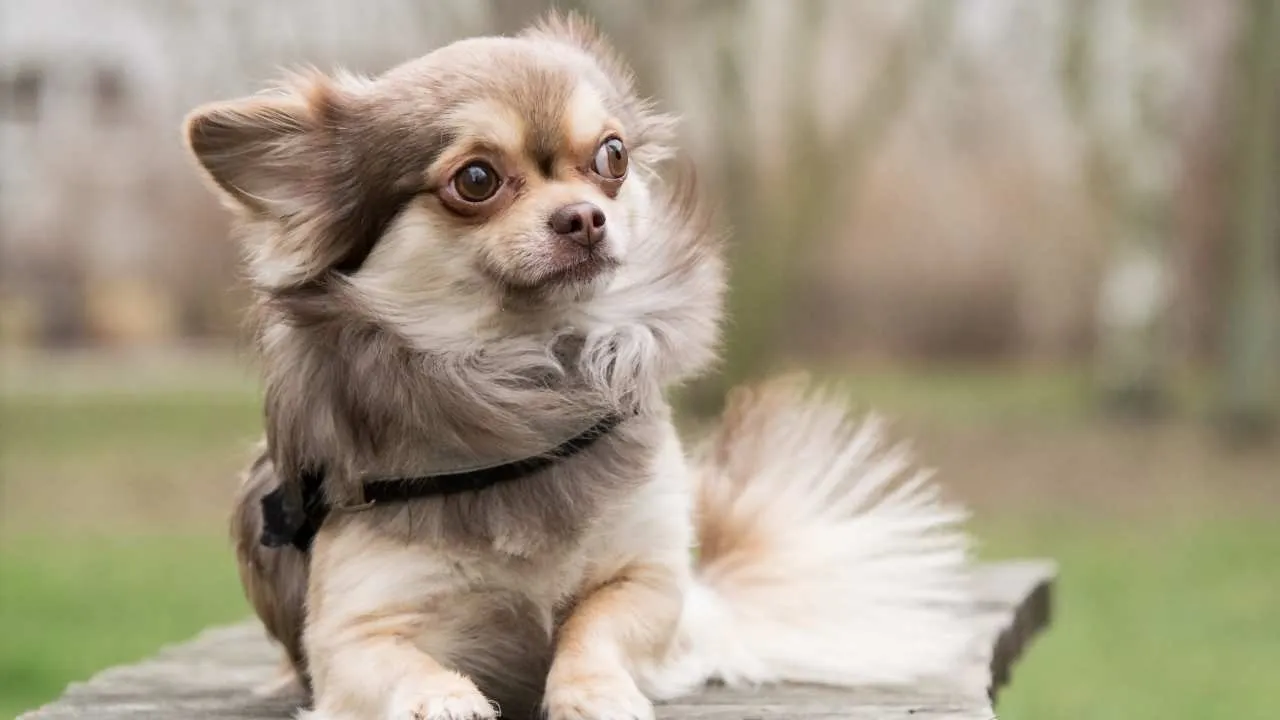
Compact yet full of personality, the Chihuahua—often affectionately called the “Chi”—is the smallest recognized dog breed in the world. Originating from Mexico, these spirited companions trace their ancestry back to the Techichi, a mute dog kept by the Toltecs as early as the 9th century CE.
Chihuahuas stand just 5 to 8 inches tall and weigh between 1 to 6 pounds, making them exceptionally suited for life on the move, especially via public transport.
Their distinctive features include large, upright ears, expressive round eyes, and either a sleek, short coat or a long, soft one. Recognized by the American Kennel Club since 1904, they belong to the Toy group and typically enjoy a long life of 12–16 years.
Care Needs
Despite their size, Chihuahuas have high energy levels and thrive on daily walks, interactive play, and plenty of mental stimulation. Their small bodies can be prone to cold, so a cozy carrier or sweater is essential for outings.
Regular grooming depends on coat type—long-haired varieties need brushing several times a week. Due to their bold nature, consistent training and early socialization are key to preventing excessive barking or reactivity.
Fun Fact: Gidget, the famous Taco Bell Chihuahua, became an icon of 1990s pop culture and brought national attention to the breed.
6. Cavalier King Charles Spaniel
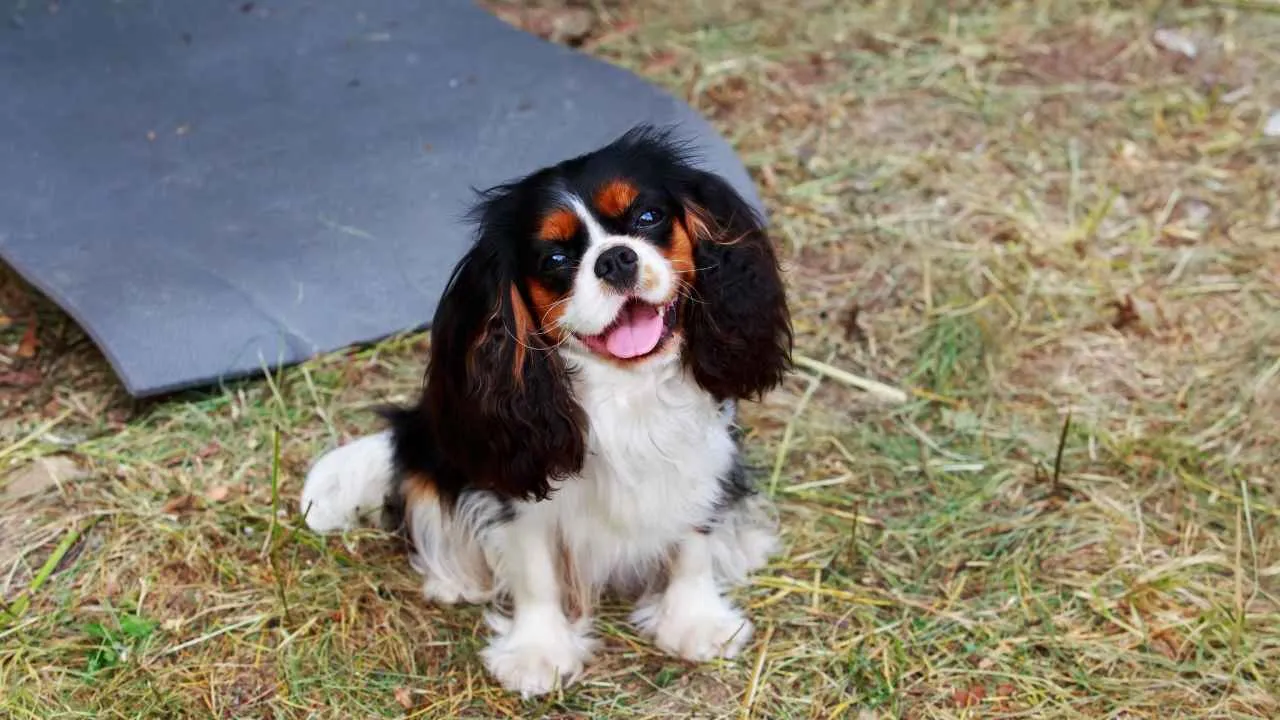
Known for their graceful elegance and affectionate demeanor, Cavalier King Charles Spaniels—often lovingly called Cavaliers or Charlies—are one of the most cherished toy breeds. Developed from the English Toy Spaniel, these dogs boast royal roots dating back to King Charles II of England.
With a compact size of 12–13 inches in height and a weight range of 13–18 pounds, they are ideal as a travel companion and city life. Their long, silky coats, expressive eyes, and feathered ears make them irresistibly charming.
Cavaliers come in four classic color patterns: Blenheim, tricolor, ruby, and black and tan. They typically enjoy a life span of 12–15 years and thrive in social settings, making them ideal public transport companions.
Care Needs
Cavaliers require regular grooming to maintain their flowing coat, including brushing several times a week to prevent tangling. When traveling, it’s essential to crate them when left alone to reduce anxiety in unfamiliar settings.
Always ensure lodging is dog-friendly and that your Cavalier remains calm, as barking can lead to complaints. Socialization, cleanliness, and respecting shared spaces are key for stress-free outings.
Fun Fact: President Ronald Reagan gifted his wife, Nancy, a Cavalier named Rex, who famously turned on the White House Christmas lights.
7. French Bulldog
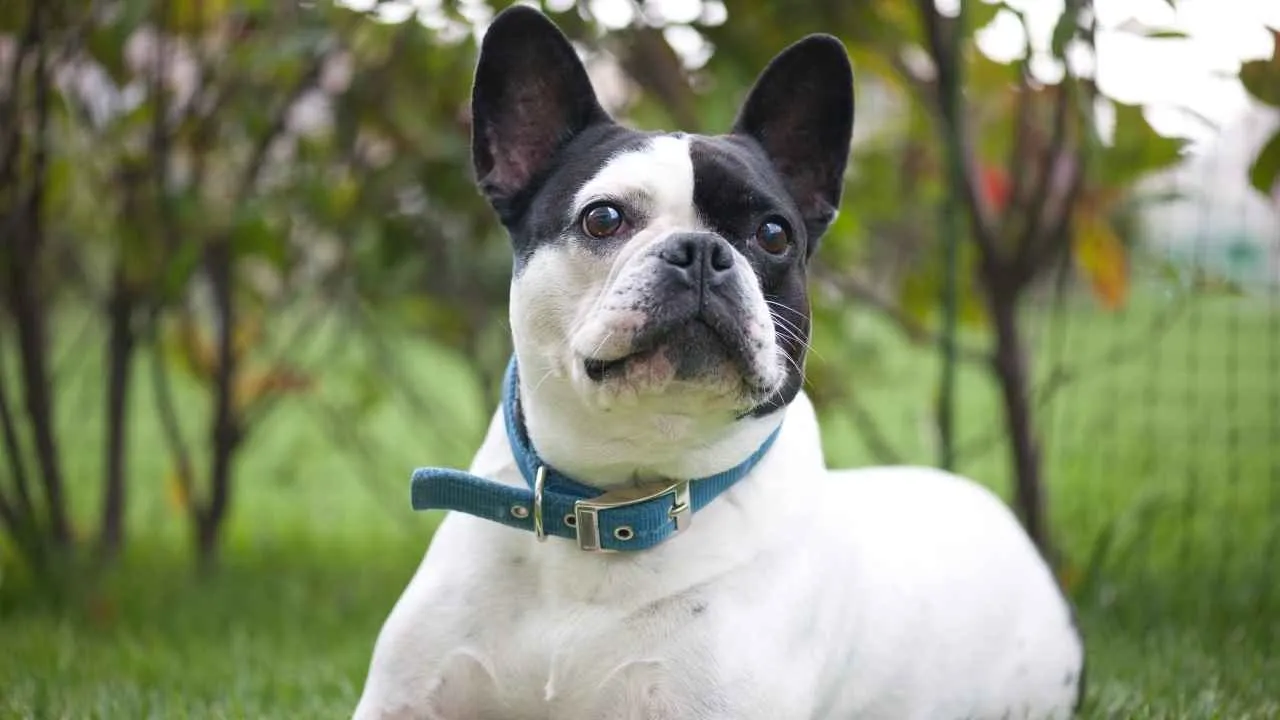
The French Bulldog, affectionately called the “Frenchie,” is a compact, muscular dog that thrives in urban settings. Originating in 19th-century France from crosses between native breeds and small toy Bulldogs, Frenchies quickly earned popularity for their playful spirit and distinctive bat-like ears.
Standing 11 to 13 inches tall and weighing under 28 pounds, they are perfectly suited for navigating crowded subways, buses, or train stations.
With their calm demeanor and small stature, French Bulldogs are well-equipped for public transport, often curling up quietly beside their owners during commutes. These Nonsporting Group dogs typically live 10 to 12 years and are known for their friendly, balanced temperament.
Care Needs
French Bulldogs are relatively low-maintenance but require consistent care. Their short coat only needs brushing once a week, but special attention should be paid to their facial wrinkles, which must be cleaned regularly to avoid irritation.
Dental care is crucial—brushing several times a week is recommended to prevent health issues. As brachycephalic dogs, they are sensitive to heat, so cool, well-ventilated spaces during travel are a must.
Fun Fact: A French Bulldog was once aboard the Titanic with its wealthy owner. While the owner survived, the dog sadly did not.
Conclusion
Navigating buses, trains, and even long car rides becomes a lot more enjoyable when your dog feels just as at ease in transit as you do. While most dogs can adapt with the right training and patience, some particular breeds—like the French Bulldog, Pomeranian, and Toy Poodle—naturally excel in these environments due to their size, temperament, and sociability. Their calm nature, friendliness toward other dogs, and minimal need for much exercise make them ideal for urban commuters and regular road trips alike.
Whether you’re tackling daily commutes or planning extended air travel, choosing a breed suited for public settings ensures a smoother journey for both you and your pup. Even in apartment living, small and adaptable dogs often thrive when they’re included in their owner’s daily routine, including travel. While large dogs can certainly learn to manage public transport, smaller breeds tend to fit more comfortably into shared spaces, making them the go-to travel companions for life on the move.


